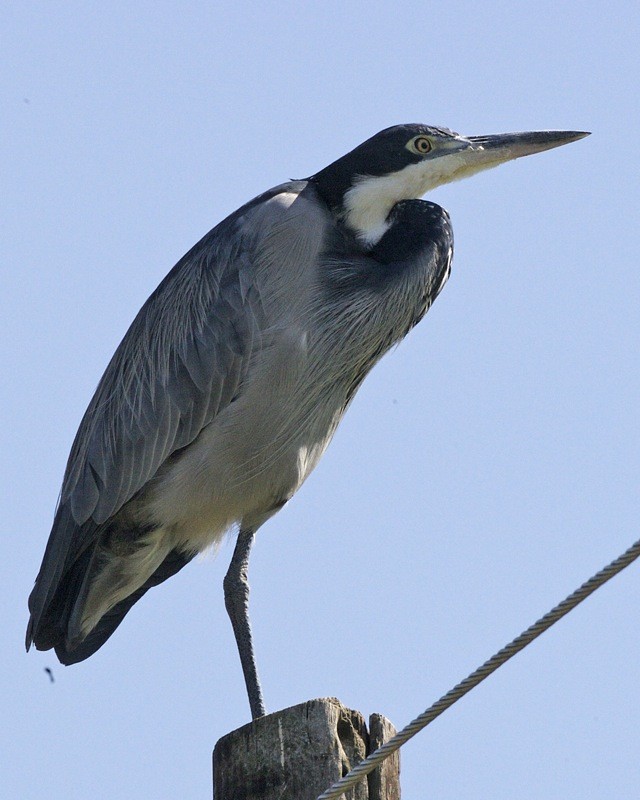Black-headed Heron
A species of Great herons Scientific name : Ardea melanocephala Genus : Great herons
Black-headed Heron, A species of Great herons
Botanical name: Ardea melanocephala
Genus: Great herons
Content
Description People often ask General Info
 Photo By Lip Kee Yap , used under CC-BY-SA-2.0 /Cropped and compressed from original
Photo By Lip Kee Yap , used under CC-BY-SA-2.0 /Cropped and compressed from original Description
The black-headed heron (Ardea melanocephala) is a wading bird of the heron family Ardeidae, common throughout much of sub-Saharan Africa and Madagascar. It is mainly resident, but some west African birds move further north in the rainy season. This species usually breeds in the wet season in colonies in trees, reedbeds or cliffs. It builds a bulky stick nest, and lays 2–4 eggs. It often feeds in shallow water, spearing fish or frogs with its long, sharp bill. It will also hunt well away from water, taking large insects, small mammals, and birds. It will wait motionless for its prey, or slowly stalk its victim. The black-headed heron is a large bird, standing 85 cm tall, and it has a 150 cm wingspan. It is nearly as large as the grey heron, which it resembles in appearance, although it is generally darker. Its plumage is largely grey above, and paler grey below. It has a powerful dusky bill. The flight is slow, with the neck retracted. This is characteristic of herons and bitterns, and distinguishes them from storks, cranes, and spoonbills, which extend their necks. The white underwing coverts are striking in flight. The call is a loud croaking. 
Size
96 cm
Nest Placement
Tree
Feeding Habits
Black-headed Heron's diet is diverse, including vertebrates like rodents and birds, invertebrates such as insects and spiders, and scavenged items. They forage solitarily or in groups, using a passive feeding approach that can extend into nocturnal hours, even under artificial lights.
Habitat
Black-headed Heron typically inhabits open terrain, favoring damp pasturelands, which may occasionally be distant from water bodies. The species also occupies a variety of other landscapes, such as moist grasslands, marshes, riverbanks, and the peripheries of both freshwater and alkaline lakes. Additionally, black-headed Heron adapts to human-altered environments, including agricultural fields, estuaries, coastal regions, and urban areas with forest clearings. While rural areas are preferred for nesting, black-headed Heron can also be found nesting within urban settings in certain regions.
Dite type
Piscivorous
People often ask
General Info
Feeding Habits
Bird food type
Species Status
Not globally threatened.
Scientific Classification
Phylum
Chordates Class
Birds Order
Pelicans and Relatives Family
Herons Genus
Great herons Species
Black-headed Heron